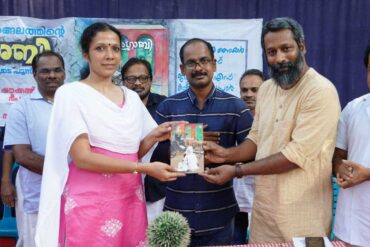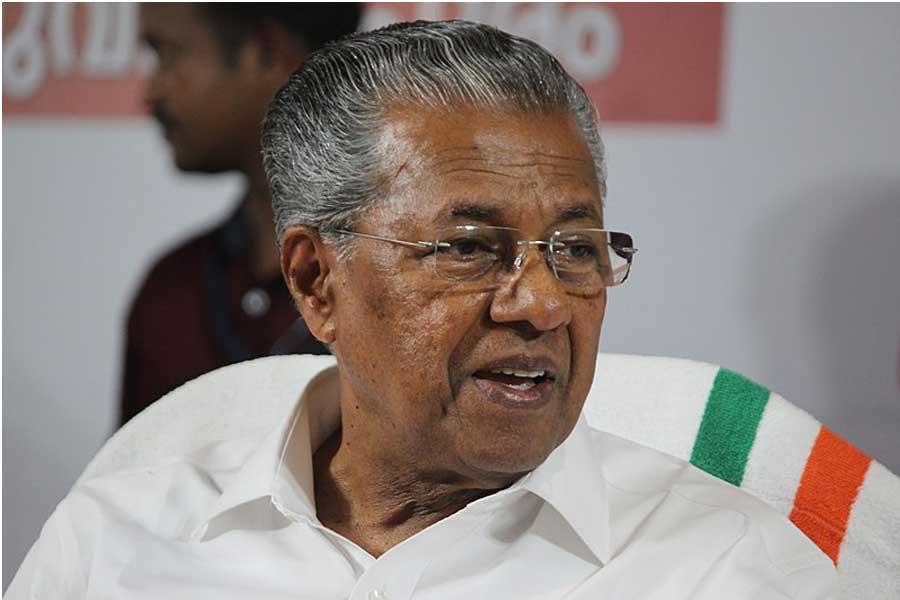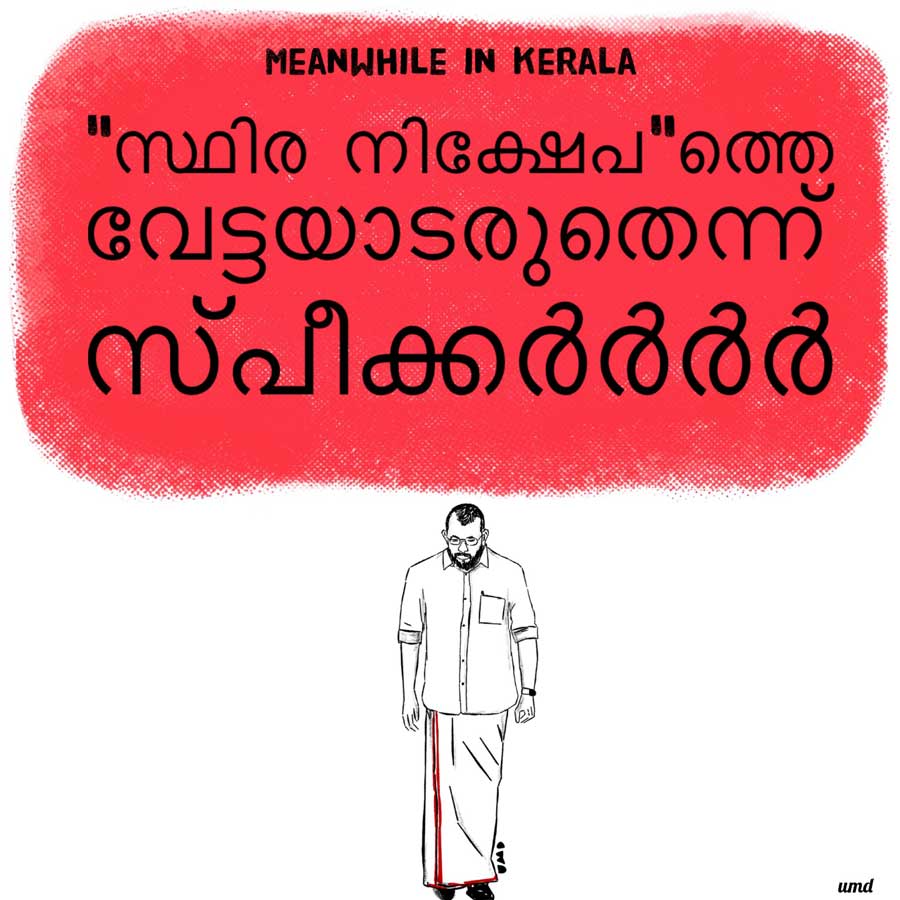Last December, days after Kerala’s ruling Left Front government took the initiative to form the ‘Navodhana Samrakshana Samiti’, an umbrella council of community leaders from the Hindu fold, in the name of re-enactment of the Kerala Renaissance Movement of the early twentieth century, I spent some time with Dr M G S Narayanan, eminent historian and public intellectual, at his home in Calicut.
The public debates at the time focused on the urgent need for a second wave of reforms, in order to counter the communal and patriarchal forces that were seen to be reasserting their might in Kerala society. Naturally, discussions with M G S Narayanan focused on contemporary politics and the efforts being taken by the Left government, including the formation of this umbrella council, to bring to life the spirit of renaissance that had inspired Malayali community from the late 19th century.
The grand spectacle of a ‘Women’s wall’ that stretched across the Arabian Sea coast from Kasargod to Thiruvananthapuram had just been concluded, adding a riot of colour to the Kerala coastline. In the wee hours of the next day, two young Malayali women entered the sannidhanam of Lord Ayyappa’s temple in Sabarimala, in a jubilant declaration of women’s empowerment in this “bastion of gender discrimination.” All these incidents received much international media attention and players in these actions gained celebrity in certain sections of Kerala society.
In the general elections that followed, in what turned out to be a test of public support for the Left Front’s stand, the ruling political establishment led by Chief Minister Pinarayi Vijayan—architect of the ‘Women’s wall’ and the minister in-charge of Home portfolio—received a massive drubbing. The setback for the Communist Party of India (Marxist) and the Left Democratic Front was so severe that they lost over five per cent votes compared to Lok Sabha elections of 2014 and as much as 12 per cent compared to the Assembly polls of 2016. The CPI (M) State Committee, after six days of introspection and door-to-door visits to gauge public mood in the wake of the election debacle, admitted to errors in the way it conducted its public campaign vis-à-vis the entry of women into Sabarimala.
The first question to be addressed here is, what do we mean by the renaissance movement, and how is it relevant to our contemporary concerns. Dr Narayanan pointed out some aspects of Kerala’s history of social reforms that have remained largely ignored. They are ignored because they do not sit well with the dominant view of our social history that has presented a rosy and exaggerated picture devoid of factual basis.

Dr Narayanan felt that Kerala Renaissance was essentially caste-based movements with limited social objectives. It could not be meaningfully compared to what was witnessed in Europe which formed part of a series of historical developments. It included renaissance initiatives in arts and culture and the rise of scientific temper. This in turn gave rise to capitalism, democracy and ideas connected with liberty, equality and fraternity, growing into a liberal democratic society. “Here what we have experienced could only be described as a chimera of renaissance,” he said, pointing out that in our academic and political discourse, this crucial limitation was never highlighted, in a collective indulgence of wishful thinking.
This is a matter for introspection. How realistic are our claims about the caste-based movements in parts of the erstwhile principalities which spoke a common language, but differed on most other aspects? How far these movements could lay claim to a socio-economic agenda cutting across the boundaries of castes and communities?
For all practical purposes, our reforms remained something like a controlled experiment in social engineering, confined to the silos of mutually-exclusive caste groups. Sree Narayana Guru, one of the few who made an effort to rise above restrictive caste boundaries ultimately had to walk out of his own organisation. The fact is, the SNDP Yogam that he founded in 1903 later transformed itself into a caste organisation of Ezhavas, on the lines of other caste-based outfits like the Nair Service Society (NSS), Namboodiri Yogakshema Sabha, Sadhujana Paripalana Sangham et al.
There were talks about community intermingling, and some efforts to promote inter-caste marriages but the dominant caste groups themselves tried to thwart such initiatives. Hence, what we have witnessed here is the transformation of these outfits into iron-curtains for caste-based identity formations.
So the net result turned out to be quite the opposite of what the reform movements had initially promised. These outfits metamorphosed into entrenched caste groups with substantial public resources at their disposal, ranging themselves against any moves for further democratisation and liberalisation of the society.
The caste/community outfits’ burgeoning power and influence became evident during the Vimochana Samaram (Liberation Struggle), a movement launched against the first Communist government that came to power in 1957. The prominent leaders of the movement were Mannath Padmanabhan of the NSS, R Shankar of the SNDP Yogam, Fr Joseph Vadakkan of the Catholic Church and other eclectic groups of a similar nature and worldview.
The Left parties—especially the CPI (M)—had learned its lessons from the experiences of 1957 to take care to not to go in for a direct confrontation with the caste/community forces in later years. But despite the need for tactical adjustments with such forces, the party leadership continued to maintain its opposition to such social forces and kept a healthy distance from them, at least in public.
The Communist leader and strategist E M S Namboodiripad had taken care to maintain the secular credentials of the Left forces, insisting on keeping the caste/community pressure groups at arm’s length. Despite the exigencies of power politics that forced occasional compromises, EMS maintained his public criticism of communal and caste groupings in Kerala. This was a position he had maintained throughout the decades in and out of power, from the fifties’ onwards.
Such consistent criticism did, at times, put him in hot water. In 1991, his description of poet Kumaran Asan, who was the first general secretary of the SNDP Yogam, as a “stooge of British imperialism” in an article published in Deshabhimani had caused serious difficulties for the party in the Lok Sabha elections held that year. There were pressures on him within the party to withdraw his words or make amends, but he refused because such open and fearless criticism has been the hallmark of Communist politics in public life throughout its existence.
It was this history of distinguishing and upholding the Communist strategy and their understanding of public affairs based on Marxism that helped the Communists win public support despite the entrenched forces ranged against them. At the same time, the party took special care not to antagonise the masses by riding roughshod over its vital concerns and emotional hotspots. This was especially true in matters like faith, rituals and religious practices et al, where the party’s views and the masses’ beliefs were divergent or at loggerheads. This was a fine balance to maintain, but still the party appears to have managed it rather successfully. The proof being that it commanded the unwavering support of the most disadvantaged people who were also the ones most ardent in their faith, rituals and religious practices. For the masses, again, it was a matter of faith—faith in a party that stood by them.
This deep trust reposed in the party has been waning in the past couple of decades, further shaken in recent times post the Sabarimala episode. Looking back, it could be observed that the Chief Minister’s decision to set up the ‘Navodhana Samrakshana Samiti’ to usher in a second wave of renaissance, consisting of representatives of some of the most retrograde social forces in Kerala, was most unfortunate. It had representation from pro-Sangh Parivar groupings like the ‘Hindu Parliament’ to the SNDP, whose political arm is allied with the Bharatiya Janata Party (BJP) in the state. Pinarayi Vijayan was abandoning the traditional Communist standpoint on social affairs and building bridges with the forces that had fought the party tooth and nail at every step.
The government moves contradicted the party’s long-held views. The LDF government was, for all practical purposes, undercutting the legitimacy of the party’s criticism of rigid identity groups even as it maintained close links to the masses, avoiding the intercession of these outfits. It was, as suggested, a delicate balance, and required a mature dialectical understanding of social and historical processes. But unfortunately, this alliance was announced in haste without deliberations in party forums. Perhaps this was the reason why it was given a quiet burial at a later stage. But, by then, the damage had been done.
The objective appears to have been simple enough: to overcome the resistance of organisations like the NSS and polarise the Hindu community on caste lines. This, however, was a very dangerous strategy: it went against the principles of societal unity propounded by the renaissance leaders as well as the Communist Party, which endeavored to unite the people on the basis of class.
Beyond the electoral setback, a deeper problem could be the eventual erosion of class consciousness among the masses and, instead, engendering among them a new sense of identity-based affiliations. For the Communists, it could prove to be self-defeating: once the masses are drawn into the vortex of caste politics, they end up in the black hole of identity politics.
Update: The ‘Hindu Parliament’ on September 12 quit the ‘Navodhana Samrakshana Samiti’ in protest against what its State general secretary C P Sugathan described as a “overwhelmingly backward caste tilt” in the organisation.







